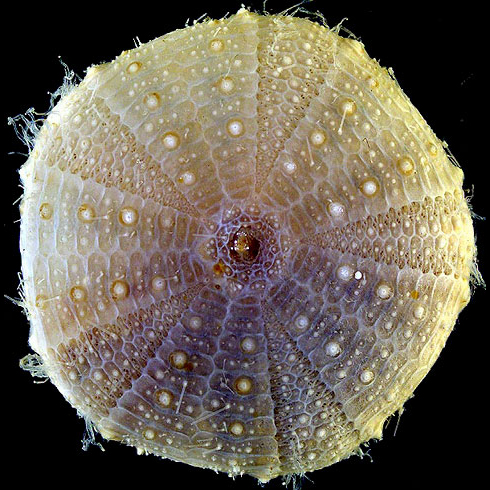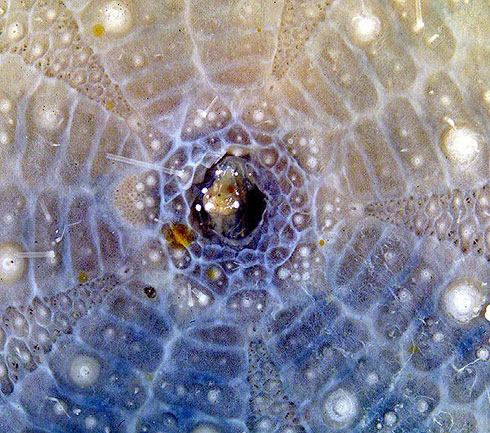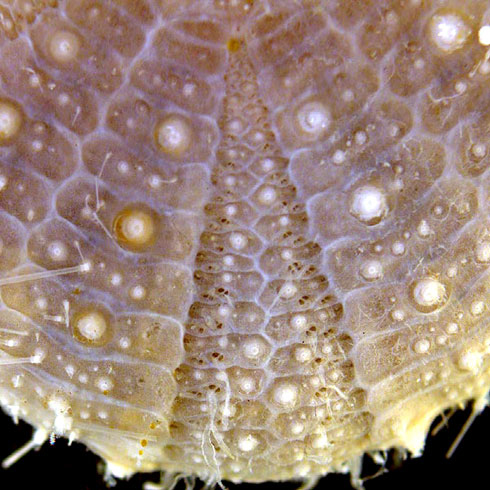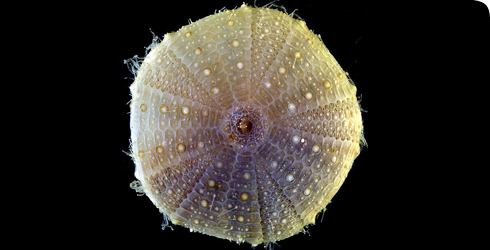Calveriosoma gracile
Sea urchins are a group of marine invertebrates that usually possess a rigid skeleton composed of thick calcitic plates. However, a small group of deep sea forms known as echinothurioids have a leathery skin with thin, embedded plates. Calveriosoma gracile is a representative of this group.
Echinothurioids were discovered first in the fossil record in the 1860s, when they were described from chalk sediments in England. Only later, when deep sea exploration began in earnest, were living examples found.
Species detail

A close-up of part of the test of Calveriosoma gracile
The test of C. gracile is up to 240mm in diameter and has a cushion-like appearance. The plate boundaries show up clearly as white regions because of the presence of exposed ligament.
The animal has a sparse covering of short, hoofed spines.
There are 2 species of Calveriosoma:
- C. hystrix
- C. gracile
They can be distinguished by the extent of tuberculation developed on their upper side.
-

Distribution and ecology
Learn more about where Calveriosoma gracile lives and what it feeds on.
Images

The body of Calveriosoma gracile, like other sea urchins, has a 5-fold symmetry

A close up of Calveriosoma gracile showing the apical disc - a ring of 10 plates around the anal opening.

A close-up of part of the test of Calveriosoma gracile, showing the pores where the animal's tube-feet extend from
About the author
Toolbox
Glossary
Test
The solid skeleton of an echinoid, formed of plates.
Tubercle
A knob-like projection that a spine attaches to on the surface of the test.

